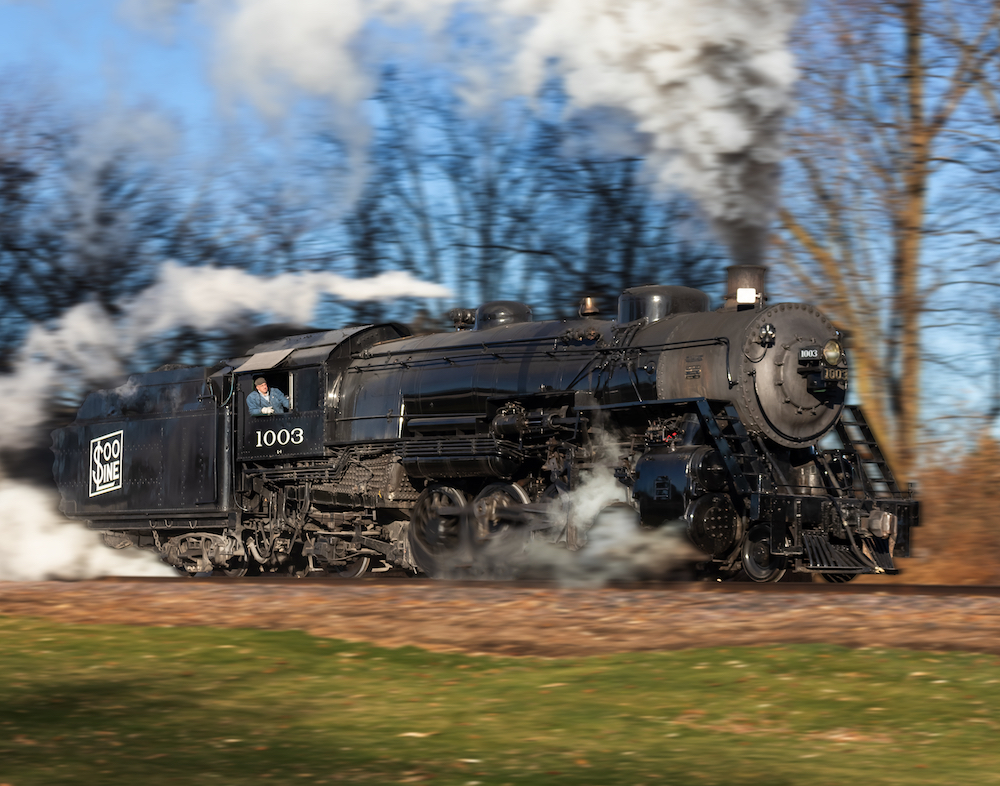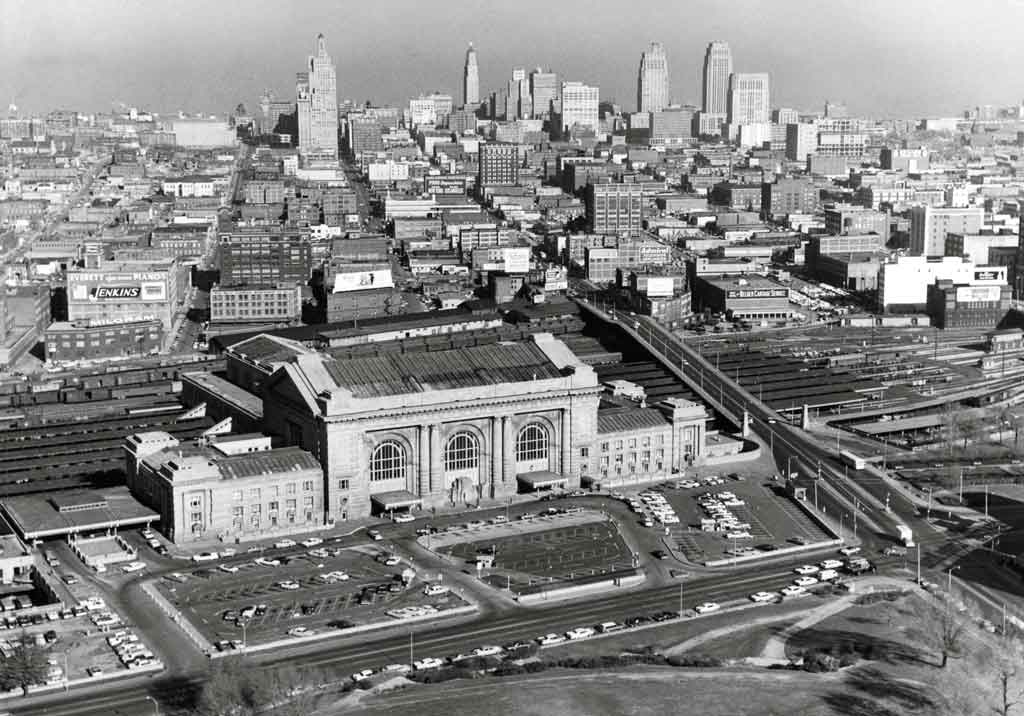
Locomotives are the power of railroading and the industries’ most potent and popular symbols. The major types that have been used in North America are steam (now confined to museums, tourist lines, and the occasional excursion), diesel-electric (the standard of the industry), and straight electric (always a tiny minority).
Steam locomotives burn coal, oil, or (in the early days) wood in a firebox at the rear of the boiler. The hot gases from the fire pass forward through tubes called flues inside the boiler, which is nearly filled with water. The gases heat the water, turning it into steam, which collects in the steam dome. By opening the throttle, the engineer admits the steam to the dry pipe, which takes it to the two valve chests (one on each side). Moving back and forth according to the engineer’s setting of the valve gear with the “reverse lever,” the valves admit steam to the cylinders at times when it can push the pistons as it expands. The piston rods are linked to main rods, which are linked to side rods, which are attached to the driving wheels. After the steam has done its work, it is exhausted into the smokebox and out the smokestack, pulling the hot, smoky gases from the flues with it in the familiar chuff-chuff cadence.
There were many configurations, or wheel arrangements, for steam locomotives (see table below). The engine in our diagram has 4 leading wheels, 4 driving wheels, and 2 trailing wheels-a 4-4-2. The majority of engines with no leading wheels were switchers, those with two hauled freight, and those with four hauled passenger trains. Before steam succumbed to the superior efficiency and lower costs of diesels, the major locomotive builders were Baldwin, American (Alco), Lima, and several railroads themselves.
Common steam locomotive designs
Wheel arrangement / Name or type
0-4-0 –
0-6-0 –
0-8-0 –
2-6-0 Mogul
2-6-2 Prairie
2-8-0 Consolidation
2-8-2 Mikado
2-8-4 Berkshire
2-10-0 Decapod
2-10-2 Santa Fe
2-10-4 Texas
2-6-6-2 –
2-6-6-4 –
2-8-8-2 –
2-8-8-4 Yellowstone
4-4-0 American
4-4-2 Atlantic
4-6-0 Ten-Wheeler
4-6-2 Pacific
4-6-4 Hudson
4-8-2 Mountain
4-8-4 Northern
4-6-6-4 Challenger
4-8-8-2 Cab-forward
4-8-8-4 Big Boy
Notes: A listing such as 0-6-0T is used to indicate a tank engine, a locomotive that carries its own fuel and water supply, with no tender. Some railroads had their own names for certain wheel arrangements, particularly the 4-8-4, which had several names (Pocono, Dixie, etc.).
Diesel-electric locomotives have a large diesel engine, or prime mover, which turns an alternator to produce electricity. The alternating current is then rectified to direct current and fed to axle-mounted electric traction motors geared to the wheels. Older units have generators that produce D.C. directly; the latest models have inverters that change D.C. back to A.C. for use in new types of traction motors, a major advance. Much of the space inside a diesel locomotive’s hood is occupied by auxiliary items such as the equipment blower and radiator assembly.
Diesel (and electric) wheel arrangements are expressed in terms of axles, not wheels. “A” indicates a single powered axle, “B” means 2 together, “C” is 3, etc. Nonpowered axles are indicated as numbers. A handful of old A1A-A1A units remain, but virtually every locomotive today has all axles powered and is either a B-B (two 2-axle trucks, as in the diagram) or C-C (two 3-axle trucks). Today’s major diesel builders are General Motors’ Electro-Motive Division (EMD) and General Electric. In the past, Alco, Baldwin, and Fairbanks-Morse also made diesels, and some are still at work.
Electric locomotives generally draw current from overhead wires via roof-mounted pantographs, modify it, and use it in their traction motors. They share many advantages with diesels, but are not as flexible because they can’t operate beyond the wires, and so are mostly confined to niches where traffic density is high.













